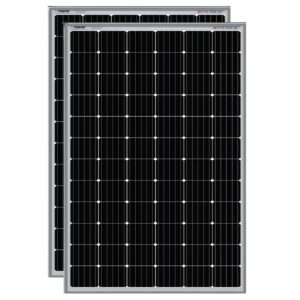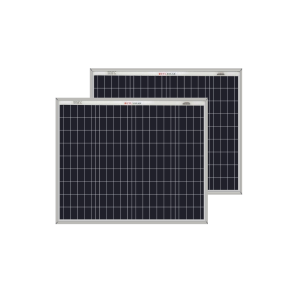Monocrystalline V/s. Polycrystalline Solar Panel
Solar panels are the base component of a solar system that initiate the process of converting solar energy to electrical energy. Besides being beneficial to the environment, these panels are attractive for economical reasons. And that is why the production and use of solar panels are increasing significantly with time.
Read in Detail:

Solar panels are the backbone of a solar system, hence it is worth studying this splendid discovery of science in detail. In this article, you will get to know every necessary detail about the types of solar panels and which among them can serve best for your purpose.
There are three types of solar panels available in various capacities. So it’s worth spending 10 minutes reading the complete information and selecting the best type that meets all your requirements.
UTL Solar 540 Watt 24 Volt Mono PERC
UTL Solar 445 Watt 24 Volt Mono PERC
UTL Solar 410 Watt 24 Volt Mono PERC
UTL Solar 200 Watt 12 Volt Mono PERC
Eapro 50W 12V Solar Panel Mono PERC: Portable,
Eapro 40 Watt Solar Panel Mono PERC: High
Eapro 175 Watt 12 Volt Mono PERC Solar
Eapro 400 Watt 24V Solar Panel: Mono PERC
UTL 335 Watt Poly Crystalline Solar Panel (Set
UTL Solar PV Panel 165 Watt/12 Volt Higher
UTL Solar Panel 100 Watt 12V High Efficiency
UTL 60 Watt 12V Solar Panel for Home
UTL 40 Watt 12V Solar Panel for Home
#1. Types Of Solar Panel
While installing solar panels, selecting the type of solar panels is the biggest dilemma. A difference in the efficiency and designation of the panels gives rise to a different type.
Out of plenty of solar panel types discovered so far, there are three most successful kinds of solar panels that are easily available in the market.
These solar panels are different from each other on the basis of their formation, their efficiency, their color and their cost. The types are as follows.
And out of the above three types, mono and poly-crystalline solar panels are popular traditional solar panels that most of the households in India are well introduced to. The third one, the bifacial module, is the latest kind of solar panel that is equipped with advanced technology to provide the highest efficiency.
#2. Mono V/s. Poly V/s. Bifacial
While deciding upon the best type of solar panels for your home, you must be aware of the strength and weaknesses of all the types available. In this section, you’ll find out the difference between the basic composition and functionalities of the three types of solar panels.
Mono crystal solar panels are made out of highly pure single piece silicon. While on the other hand, poly crystal solar panels are made out of fragments of silicon which were melted together to form the wafer. Bifacial panels can be made of any of these traditional solar cells though they are usually monocrystalline cells.

Comparing the energy efficiency of the three types of solar panels, Monocrystalline panels are over 20% efficient while polycrystalline panels are somewhat less efficient with an energy efficiency lying between 15-17%. Being highly advanced, bifacial solar panels are most efficient with an efficiency rate that can go high to 27%.
#3. Polycrystalline Solar Panel
Polycrystalline solar panels are also called multi-crystalline or many-crystal silicon panels. Many silicon crystals are melted together to form the wafers of polycrystalline solar panels. The silicon ingots used to form these panels are low in purity.
The angles of cells in polycrystalline solar panels are uncut from edges and the cells are square in shape. The formation of these panels involves no wastage and that’s what makes the panels highly affordable when compared to other types.
Polycrystalline solar panels are blue in color. Though the composition of the panels results in providing several remarkable features, it makes the panel less efficient and less heat tolerant.
In a nutshell, polycrystalline solar panels are a solution to homeowners who want to install an affordable solar system with cost-effective solar panels that are moderately efficient.
Read in detail about: Polycrystalline Solar Panel
#4. Monocrystalline Solar Panel
Mono crystal panels are made out of a single piece of silicon. Highly pure silicon is used to make these panels. Highly pure silicon is used to make these panels.
Monocrystalline solar panels, also known as single crystalline silicon solar panels, are dark black. The edges of cells in monocrystalline solar panels are cut off to avoid the maintenance cost and also to increase its efficiency level.
The composition of monocrystalline solar panels makes them most space-efficient and highly durable and efficient. It reduces the risk of potential failure while increasing the life expectancy of the panels as high as 25 to 35 years.
As a consequence, monocrystalline solar panels are highly popular for being used in most Indian houses. If high production output and space efficiency are your priorities, the monocrystalline solar panels are for you.
Read in detail about: Monocrystalline Solar Panel
#5. Bifacial Solar Panel
Bifacial solar panels are composed of cells that can be monocrystalline or polycrystalline. But they are different from the traditional solar panel types as they can produce power from both sides of the panel.
The bifacial solar panels are designed in a way that allows the modules to equip both of their sides to absorb the sunlight coming from the sun to convert it into electricity. This feature increases the efficiency of the panels to a significant amount.
This new invention in the field of solar panels has entered the mainstream with a huge list of highly advanced features including UV resistance on both of its sides. The panels reduce the balance of system costs along with reducing the concern of potential-induced degradation.
So for the individual who aims to have a highly advanced form of solar panels that performs best in every condition, bifacial solar panels are next to perfect.
Read in detail about: Bifacial Solar Panel
Thin Film Solar Panel
Thin film solar panel is made out of a number of materials. As realize by its name, it is thinner than poly-crystalline or monocrystalline solar power panels. This solar panel comes both blueish and blackish colors, depending upon its making material. But thin film solar panel are now obsolete and therefore not used in India anymore.

#6. Comparison: Mono V/s. Poly V/s. Bifacial
Metrics are best at making a fair comparison. To bring the battle to your hands, we have compared the main features of all three kinds of solar panels in a tabular form too.
| Features | Polycrystalline Panels | Monocrystalline Panels | Bifacial Panels |
Composition | Fragments of silicon crystal | Pure silicon crystal | Either of the two ways |
Efficiency | Up to 17% | Up to 21% | Up to 30% |
Colour | Blueish | Black | Mostly black |
Lifespan | Around 35 years | Around 40 years | 25+ years |
Space Efficiency | Low | High | High |
| Temperature Coefficient | High | Comparatively low | Low |
Cost | Less expensive | More expensive | Most expensive |
#7. Which Solar Panel is Better?
All types of solar panels have their pros and cons. There is no ultimate best solar panel type that can suit the preferences of every customer. It certainly depends on several factors like personal preferences, space constraints and solar financing.
We are here to guide you to find out the best type of solar panel for your home, putting forward information based on the experience of the customers.
Monocrystalline solar panels are proven to be the best kind of solar panels available in the market. These are considered to be premium solar products. Though the panels are moderately expensive, they perform great and cost-effectively in almost all temperature conditions.
#8. Mono & Poly Price Comparison
The price of solar panels is determined using their solar price per watt. The price per watt (average) of polycrystalline panels is around Rs.22 while it is Rs.24 for monocrystalline.
| Solar Panel Model | Mono Panel Price | Poly Panel Price |
| 50 Watt Solar Panel | Rs. 1,600 | Rs. 1,500 |
| 100 Watt Solar Panel | Rs. 3,200 | Rs. 3,000 |
| 150 Watt Solar Panel | Rs. 4,800 | Rs. 4,500 |
| 200 Watt Solar Panel | Rs. 5,200 | Rs. 4,800 |
| 250 Watt Solar Panel | Rs. 6,500 | Rs. 6,000 |
| 300 Watt Solar Panel | Rs. 7,800 | Rs. 7,200 |
| 350 Watt Solar Panel | Rs. 8,700 | Rs. 8,000 |
- (Inclusive of all taxes) Prices can vary ± 10% to 12% depending on location, promotions and availability, and solar brand.
- Prices are exclusive of Govt. Subsidy, as the subsidy on solar systems depends on your eligibility and types of solar system.
Read more about subsidy on solar panel here: https://kenbrooksolar.com/solar-benefits-mnre-govt-subsidy
Frequently Asked Question
In terms of efficiency, a monocrystalline panel is way better than a polycrystalline solar panel.
The major difference between the kinds of solar panels is in their composition. Monocrystalline is made of pure silicon crystal while polycrystalline is made of fragments of silicon crystal.
You can differentiate between a monocrystalline solar panel and a polycrystalline solar panel by their appearance. Monocrystalline is black while the other one is bluish.
The three types of solar panels are monocrystalline, polycrystalline and bifacial.
For ,ore than 25 years.
No, they don’t. Solar panel need sunlight to generate electricity.
Usually, solar panels last around 25 to 30 years.
For buying any type and capacity solar panels, you can contact us. You can also buy it from our online solar store.
















